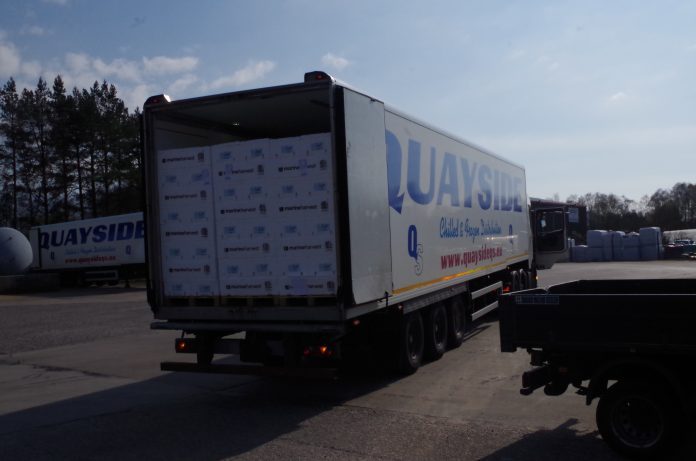Tavish Scott said that “Norway would be very happy to supply to the marketplace if Scotland can’t”.
With only one month to go before the UK leaves the EU’s single market and customs union rules on 1 January, the Scottish salmon industry still has one major concern about Brexit: seamless trade.
The UK and the EU are yet to agree on a deal.
Holyrood reports that SSPO boss Tavish Scott said that it’s crucial that perishable salmon must not be caught up in lengthy queues in Kent, South East England.
In September, the Chancellor of the Duchy of Lancaster MP Michael Gove, wrote to logistics groups with the government’s “reasonable worst-case scenario” planning for when the UK leaves the EU’s single market and customs union rules on 1 January.

Gove warned queues of up to 7,000 trucks could clog up roads around ports. The contingency plan, dubbed Operation Fennel, caters for up to 7,000 HGVs as the EU is expected to impose full goods controls. The FT reported that in a worst-case scenario this could mean two-day delays in Kent, as half of big businesses and only 20 per-cent of small businesses would be ready for the strict application of new EU requirements at the border.
Scott said that this could have “serious implications” for the Scottish salmon farming sector. “We export hugely to France and the rest of the EU. It’s crucial that trade is seamless so a lorry park in Kent or delays on the other side of the Channel would have serious implications. Norway would be very happy to supply to the marketplace if Scotland can’t.
“Our product has to go at the right time because it’s perishable, so we need to get as much as possible out of the UK Government but we don’t know if there will be a deal or not so we don’t know how it will operate,” he added.
On the other side of the English Channel, the FT reported on EU member tensions over the European Commission’s refusal to say if and when it might present temporary contingency measures for hauliers to transport goods.

